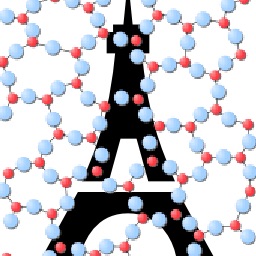Topological constraints and rigidity of network glasses from molecular dynamics simulations
Due to its non-crystalline nature, the glassy state has remained one the most exciting scientific challenges. To study such materials, Molecular Dynamics (MD) simulations have been extensively used because they provide a direct view into its microscopic structure. MD is therefore used not only to reproduce real system properties but also benefits from detailed atomic scale analysis. Unfortunately, MD shows inherent limitations because of the limited computational power. For instance, only the simulations of small systems are currently permitted, which prevents from studying small compositional changes, although it is well known that they can dramatically alter system properties. At this stage, it is tempting to follow topological constraint theory, which aims at describing macroscopic properties of the glass relying only on the connectivity of individual atoms, thus considering the complicated glass network as simple mechanical trusses. Thanks to only basic hand calculations, this theory has been successful in predicting complex composition and temperature behavior of glass properties, such as the glass forming ability, the viscosity of the corresponding liquid or the elasticity. The purpose of my PhD work is to connect these successful approaches based only on the topology of the underlying low-temperature network with properties that can be obtained from MD calcultations. It should thus allow for an increased applicatibility of rigidity theory.
